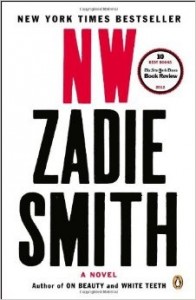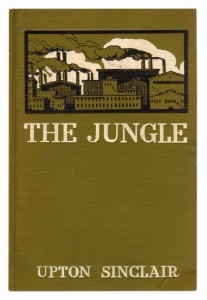by Hope Dorman
Registration is soon upon us! Around this time, students narrow down which courses they want to take for the upcoming semester. To best prepare for the top and secondary choices of classes, the professors weighed in on the highlights and texts of their courses. Read on to find out more about next semester’s offerings and help make your decision a little easier!
Dr. Hersh – Otherness in Early British Lit
“This course explores representations of “otherness” in medieval literature. Many people incorrectly assume that medieval literature is populated only by blonde damsels in distress and white knights in shining armor, but the texts that we will read together will prove otherwise as we investigate poetry, prose, and plays that include provocative representations of gender, Islam, Judaism, race, and homosexuality. We’ll tackle questions such as: what is the connection between the monster and “the other” in medieval literature? what did medieval women have to say about their own literary representations? what can we learn about posthumanism from studying a pre-humanist era? what can these texts teach us about our own enduring struggles with issues of difference?
One of my favorite things about this class is that we get to apply rich modern lenses such as feminist theory, queer theory, race theory, and posthumanism to these pre-modern texts; this allows us to not only to see how 21st-century conceptions of otherness are radically different from those of the medieval period, but also illustrates how these conceptions have developed from such early models. Our readings will cover terrain such as werewolf stories, violent descriptions of the Crusades, incidents of cannibalism, and even one or two radical feminist damsels in distress. Texts may include The Song of Roland, selections from the Lais of Marie de France, The Siege of Jerusalem, The Croxton Play of the Sacrament, and selections from Chaucer’s Canterbury Tales.”
Dr. Brassard – Studies in Women Writers

“Studies in Women Writers is a favorite course of mine because I enjoy sharing some of my favorite authors and texts with students. It’s also a favorite because feminist criticism is my preferred lens in my scholarship. Students should expect to read a lot of novels (some of them on the hefty side), and discuss thematic concerns centered on gender, class, and sexuality. We will also read and debate major feminist critics and theorists, and apply their concepts to the literature. Authors and texts will include Woolf’s A Room of One’s Own and Orlando; Austen’s Persuasion; Bronte’s Villette; Rossetti’s “Goblin Market”; Bowen’s To the North; Lively’s Moon Tiger; Winterson’s Oranges are not the only fruit; and Smith’s NW. The last time I taught this course, one student confessed to throwing a book across the room because she found the ending so upsetting! So if you like vigorous and passionate engagement with provocative classic and contemporary texts, sign up for Studies in Women Writers.”
Dr. Larson – Film and Literature
“Amid our age of screens, when the visual increasingly competes with the verbal, English 352 will analyze text-to-film adaptations. We’ll aim to acquire a technical and theoretical vocabulary for understanding how the two media of literature and film communicate. The course will introduce students to a number of lesser-known films as we examine how the varied genres of written work (screenplay, play, short story, novel, graphic narrative, nonfiction essay) get translated to the screen. We’ll ask many questions concerning form: How do the two modes of narrative – literature and film – signify similarly and differently? How does a text’s literary genre influence its filmic adaptation? In this way, we’ll discover which written elements may be fittest for survival in their evolution into the visual. Texts will include a fistful of theoretical essays, Stephen Apkon’s The Age of the Image, Shakespeare’s Macbeth, William Faulkner’s “A Rose for Emily”, Harvey Pekar’s American Splendor, Susan Orlean’s “Orchid Fever”, among others. Films will include Ron Fricke’s wordless Samsara, Orson Welles’s Citizen Kane, Christopher Nolan’s Memento, Spike Jonze’s Adaptation, and others.”
Dr. Hiro – History and Politics in Fiction

“The official title for the course is History and Politics in Fiction, but I teach a version of the course that I call “American Literature and Social Change.” The reading list includes texts that not only helped make change in American history, but also were conceived explicitly as instruments of change. This list includes Harriet Beecher Stowe’s Uncle Tom’s Cabin, which aimed to awaken Americans to just how un-Christian and un-American slavery was; Upton Sinclair’s The Jungle, which targeted unfair labor practices but ended up making change instead in food safety laws; and Barbara Ehrenreich’s Nickel and Dimed, which forces its readers to see the way our 21st-century economy depends on an underclass of workers we don’t respect. The class pursues questions about the relationship between art and politics; some have argued that literature that explicitly engages in social issues shouldn’t be considered art at all. I love teaching this class because it gets students learning about the great tradition of socially-engaged literature in the U.S., and also helps answer that ongoing question, “What is literature good for, anyway?” ”
Dr. Orr – American Lit, Beginnings to 1865
“This course provides students with an introduction to how Americans began to define themselves, and those definitions continue to obtain for us today. In that sense, I think students will see aspects of what it means to be an American that feel very familiar and comfortable while at the same time confronting some of the uglier parts of our identity that we sometimes do not want to think about. I’m particularly happy to introduce students to the novel Hope Leslie.”
Dr. Weiger – Romantic Literature

“In the late eighteenth and the nineteenth-century naturalists, poets, and explorers discussed and refined an activity many of us take for granted: looking. In their intensity, originality, and revolutionary potential, these ways of looking changed the way we see – and feel and think about – nature, art, life, science, taste and nation. In readings of late eighteenth and early nineteenth-century natural history literature, aesthetics, poetry, and novels we will explore the often paradoxical nature of nineteenth-century looking: its absorption in both the wonderful and the quotidian, the wild and the domestic, the obscure and the minutely detailed. We will pay special attention to how Romantic writers and naturalists saw and represented the nonhuman environment, translating its mountains and woods into landscapes, it creatures into specimens, and its ambiguous relation to human feeling into poetry and prose. The course will feature Coleridge and Wordsworth’s Lyrical Ballads, Dorothy Wordsworth’s Journals, Jane Austen’s Sense and Sensibility, John Clare’s poetry, Keats’s odes, and Mary Shelley’s Frankenstein.”
Dr. Swidzinski – Shakespeare
“We’re going to read about a dozen plays, ranging from the perennially classic (e.g. Hamlet, Macbeth, Midsummer Night’s Dream) to the now thoroughly controversial (e.g. Taming of the Shrew, Merchant of Venice, Othello), to the comparatively less famous but still fascinating and delightful (e.g. Titus Andronicus, I Henry IV, As You Like It), and we’ll situate these plays in their historical and socio-political moments. We’ll also be looking at (and writing about) a number of film adaptations of the plays, and we’ll read a selection of Shakespearean criticism spanning over 300 years. One of our central questions, and one that always excites me, is ‘Why did Shakespeare become, and why is he still, such a cultural institution?’ We can’t think about the man without also analyzing the myth. Thinking about Shakespeare offers us an opportunity to think also about the history of reading/viewing/performance since the seventeenth century: what have readers/viewers/performers sought in Shakespeare, and what new, often radical habits of interpretation have they brought to bear upon these famous plays?”
Registration begins on November 9th and the schedule can be found here: https://www.up.edu/registrar/default.aspx?cid=4155&pid=900
Hopefully these summaries can help you figure out what each course will cover next semester! Good luck selecting from this awesome list, and be sure to talk to your adviser if you have any questions.
